Years active 1987–present Parents Joan Arias, Ron Arias | Role Filmmaker Name Michael Arias | |
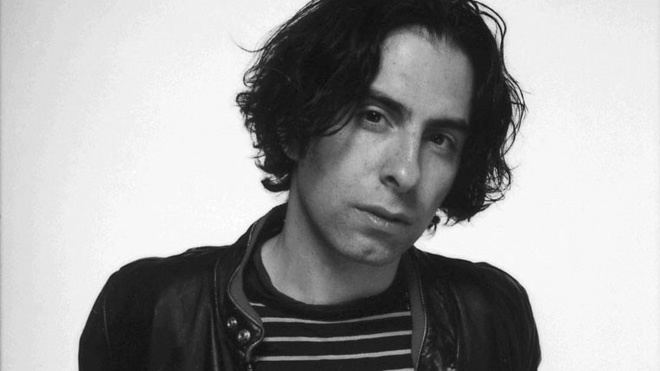 | ||
Movies Tekkonkinkreet, Heaven's Door, The Animatrix, Harmony Similar People Takashi Nakamura, Taiyo Matsumoto, Project Itoh, Shinji Kimura, Shuko Murase | ||
ANN Interviews Tekkon Kinkreet director Michael Arias
Michael Arias (born 1968) is an American-born filmmaker active primarily in Japan.
Contents
- ANN Interviews Tekkon Kinkreet director Michael Arias
- Whites Dream Plaid Tekkonkinkreet Soundtrack A Michael Arias Film
- Early life
- Early career
- Dream Quest Images
- Back To The Future The Ride
- Imagica and Sega Enterprises
- Syzygy Digital Cinema
- Softimage
- Tekkonkinkreet Pilot Film
- The Animatrix
- Recent career
- Tekkonkinkreet
- Association with Asmik Ace
- Short film Okkakekko
- Heavens Door
- Short film Hope
- Harmony
- Sunny
- Personal life
- Achievements and recognitions
- References
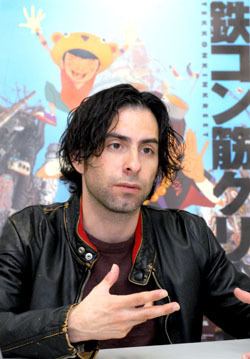
Though Arias has worked variously as visual effects artist, animation software developer, and producer, he is best known for his directorial debut, the anime feature Tekkonkinkreet, which established him as the first non-Japanese director of a major anime film.
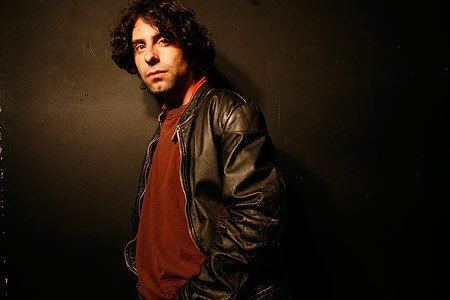
White's Dream - Plaid / Tekkonkinkreet Soundtrack / A Michael Arias Film
Early life
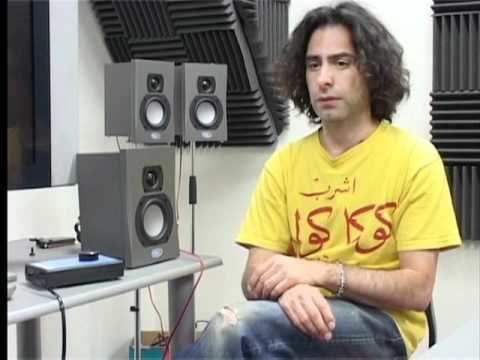
Michael Arias was born in Los Angeles, California. His father, Ron Arias (born 1941) is a former senior writer and correspondent for People magazine and a highly regarded Chicano writer. Michael Arias' mother, Dr. Joan Arias, is a former professor of Spanish and IBM Software Sales Specialist.
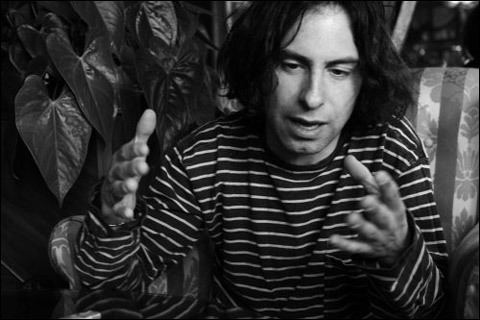
When still a young boy, Arias often watched movies in the theater with his parents and borrowed 16mm prints from a local public library for screening at home; it was at this stage in his life that he developed his passion for cinema.
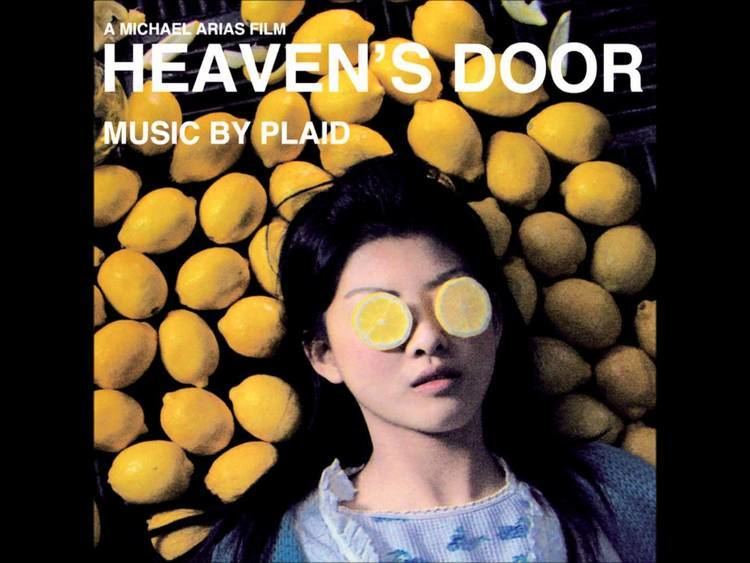
Arias graduated from the Webb School of California at the age of 16. He then attended Wesleyan University in Connecticut, majoring in linguistics for two years, before dropping out to pursue a career as a musician. Michael's early musical associates include Moby and Margaret Fiedler McGinnis.
Soon after quitting Wesleyan, Arias moved to Los Angeles, abandoned his musical ambitions and, through the efforts of a family friend, began working in the film industry.
Early career
Michael Arias' early filmmaking career is marked by stints in both the U.S. and Japan, working in VFX, CG production and software development, and as a producer of animated films.
Dream Quest Images
Michael Arias began his film career in 1987 at nascent visual effects powerhouse Dream Quest Images (DQ), first as an unpaid intern and then as a full-time employee and IATSE member. The bulk of his time at DQ was spent as a camera assistant on the motion control stages, working on such effects-heavy Hollywood films as The Abyss, Total Recall, and Fat Man and Little Boy.
At the time, the visual effects industry had only just begun adopting digital technologies, and analog techniques such as motion control and stop motion photography, miniatures, optical compositing, matte painting, and pyrotechnics still dominated. Arias, by his own account, flourished in the hands-on environment of DQ ("a big tinkertoy factory run by car nuts and mad bikers").
Back To The Future: The Ride
After two years of working at Dream Quest, Arias returned to the East Coast with the intention of finishing his studies, this time at NYU's Music Technology program. Soon after enrolling though, Arias was contacted by visual effects veteran and fellow Abyss alumnus Susan Sitnek, who invited Arias to join the crew of Universal Studios’ immersive attraction Back To The Future: The Ride (BTTFTR), helmed by visual effects legend Douglas Trumbull. Once relocated to the Berkshires, where pre-production was underway, Arias was drafted by Trumbull to animate the attraction's flight-simulator-style ride vehicles. Of his time working under Trumbull, Arias recalls, "Doug was – IS – such an inspiring figure. For me and the other younger crew, including John Gaeta, now VFX Supervisor on the Matrix films, Doug was so generous with his knowledge; such a very warm and receptive and articulate and creative guy."
Arias' association with Trumbull proved fortuitous, not only for the experience of working daily with Trumbull himself, but also because it resulted in what would be Arias' first trip to Japan, with Trumbull, with whom he toured the Osaka Expo and visited post-production monolith Imagica and video game giant Sega Enterprises. That first visit, combined with Arias' friendship with key members of BTTFTR's largely Japanese modelmaking crew, set the stage for Arias' subsequent long-term stay in Japan.
Imagica and Sega Enterprises
In 1991 Arias accepted an offer to work as a motion-control camera operator in Imagica's Special Effects department, and moved to Tokyo. Then, after less than a year at Imagica, he was invited by up-and-coming game producer Tetsuya Mizuguchi to join a newly formed computer graphics unit at Sega Enterprises Amusement Research and Development facility. At Sega, Arias co-directed and animated the ridefilm Megalopolice: Tokyo City Battle (featured in SIGGRAPH 1993’s Electronic Theater).
Syzygy Digital Cinema
In 1993 Arias returned to the US and teamed up with renowned New York City title designers Randall Balsmeyer & Mimi Everett, with whom he co-founded CG design boutique Syzygy Digital Cinema, creators of digital sequences for David Cronenberg’s M. Butterfly, Joel and Ethan Coen’s The Hudsucker Proxy, Robert Altman’s Prêt-à-Porter, and Spike Lee’s Crooklyn and Clockers. Their title sequence for M. Butterfly was honored by inclusion in the SIGGRAPH 1994 Screening Room and Montreal's Cinéma Du Futur festival of the same year.
Softimage
Exhausted by the demands of production and hoping to gain further experience developing computer graphics software, Arias accepted an offer from 3D-animation software innovator Softimage to join their newly formed Special Projects group, a "S.W.A.T." team of artists and engineers established to assist key high-end customers on-site.
Encouraged by colleagues, Arias quickly immersed himself in the mental ray rendering API and thereafter began experimenting with techniques for simulating traditional animation imagery using computer graphics tools. This research led to Arias' developing and eventually patenting Softimage's Toon Shaders, rendering software for facilitating integration of computer graphics imagery with cel animation. Newly minted Toon Shaders in hand, Arias worked closely with the staff of DreamWorks Animation and Studio Ghibli to add a distinct visual flavor to the traditional/digital hybrid animation of films Prince Of Egypt, The Road to El Dorado, and Hayao Miyazaki’s Princess Mononoke (もののけ姫, Mononoke-hime) and Spirited Away (千と千尋の神隠し, Sen to Chihiro no Kamikakushi).
Tekkonkinkreet Pilot Film
In 1995, after establishing himself definitively in Tokyo, Arias was introduced by a friend to Taiyō Matsumoto's manga Tekkonkinkreet (鉄コン筋クリート, Tekkon Kinkurīto), a work that profoundly affected him. Tekkonkinkreet (Tekkon) is a metaphysical coming-of-age story concerning two orphans, Black (クロ, Kuro) and White (シロ, Shiro) and their struggle to survive in a pan-Asian metropolis, Treasure Town (宝町, Takara-machi), beset by evil. Of first discovering Tekkon, Arias recalls that a friend loaned him Tekkon to read, "And that was it. Hooked. ...I cried many times reading it, also a new experience for me to be moved to tears by a manga."
In November 1997, a conversation with animation auteur Koji Morimoto, who had shown interest in Arias' software projects, led to Arias' introduction to manga artist Taiyō Matsumoto. From there, what had begun as a simple software demo for Morimoto rapidly escalated to a full-fledged all-CG feature-film project, helmed by Morimoto, with computer graphics efforts directed by Arias himself.
Though the completed 4-minute Tekkonkinkreet Pilot Film (「鉄コン筋クリート」パイロット版, Tekkonkinkurīto Pairottoban) went on to take an Outstanding Performance award for Non-Interactive Digital Art at the Japan Media Arts Festival and be featured in the SIGGRAPH 2000 Animation Theater', the project was abandoned shortly thereafter for lack of funding and director Morimoto's flagging interest in Tekkonkinkreet.
The Animatrix
Then, in 2000, while still under contract to Softimage, Michael accepted an invitation from Joel Silver and Andy and Lana Wachowski (the Wachowskis) to produce Warner Bros’ Matrix-inspired animation anthology The Animatrix, a project that consumed him for over three years. On being pegged to produce The Animatrix, despite his lack of experience producing, Arias recounts, "I really had to draw on a great deal of experience that had sat unused in the background while I’d been pursuing software development. Everything I’d learned until this point: a brief career in recording studios, composing music and doing sound effects for short films in college, having my own company, working in special effects. It was a great chance to exercise some dormant (or damaged) brain cells."
Arias worked closely with the Wachowskis to refine the project's unique specifications: though initially conceived of as a television series, The Animatrix evolved into a collection of nine non-episodic animated shorts, each six to ten minutes long. With co-producers Hiroaki Takeuchi and Eiko Tanaka (president of maverick animation boutique Studio 4°C, where much of The Animatrix was animated), Arias ultimately developed and produced eight of the nine Animatrix segments (the lone exception being a CG-animated short created by Square Pictures). To helm the films, Arias and his partners assembled a "dream team" of anime luminaries that included Yoshiaki Kawajiri, Koji Morimoto, Shinichiro Watanabe, and Mahiro Maeda.
The Animatrix was a commercial success and went on garner the 2004 ASIFA Annie Award for Outstanding Achievement in an Animated Home Entertainment Production.
Recent career
Michael Arias' recent career has been focused primarily on directing.
Tekkonkinkreet
In 2003, while working on The Animatrix, Arias picked up Tekkonkinkreet again. Armed with an English-language screenplay penned by screenwriter Anthony Weintraub, and encouraged by mentor Morimoto, Arias moved forward with plans to revive Tekkon at Studio 4°C, with Animatrix collaborator and 4 °C president Eiko Tanaka producing and Arias directing.
The film was completed in August 2006 and premiered at the Tokyo International Film Festival soon thereafter.
Museum of Modern Art (MoMA) curator Barbara London named Tekkonkinkreet "Best Film of 2006" in her Art Forum roundup, and subsequently arranged for the film's North American premiere to be held at MoMA.
With his adaptation of Tekkonkinkreet Arias, with Production Designer Shinji Kimura, had re-imagined the manga's Treasure Town as a chaotic pan-Asian hybrid, part Hong Kong, part Bombay, with futuristic and industrial elements densely layered over a foundation that borrowed much from images of Shōwa-era Tokyo. New York Times critic Manohla Dargis, in her review of Tekkonkinkreet, describes Treasure Town as "a surreal explosion of skewed angles, leaning towers, hanging wires, narrow alleys and gaudily cute flourishes that bring to mind a yakuza cityscape by way of a Hello Kitty theme park." Indeed, Tekkon's sumptuous art direction was widely praised, with Production Designer Kimura receiving the Best Art Direction award at the 2008 Tokyo International Anime Fair. Tekkon was further lauded, not only for Arias' innovative use of computer graphics techniques and seamless integration of digital and traditional animation, but also for the film's handmade, documentary-style approach to storytelling. After an early Tekkon screening at the Los Angeles Asian Pacific Film Festival, filmjourney.org editor Doug Cummings elaborated:
Arias’ angles and compositions are uniformally [sic] inventive and striking, and most impressively, he incorporates a bevy of live action camera techniques: handheld framing, long tracking shots through corridors, rack focusing and shifting depths of field–that generate considerable immediacy and environmental realism (despite the obvious hand-drawn artifice). More than simple technological advances, these elements have long been untapped by feature animation due to their inability to be storyboarded – they’re traditional luxuries of live action spontaneity. For all the accolades bestowed upon Alfonso Cuarón’s digitally-composited tracking shots in Children of Men, Arias’ techniques here are arguably greater achievements.
Though Tekkonkinkreet was considered a hit locally and generally well-received by critics and audiences worldwide (particularly in France, where author Taiyō Matsumoto's work is well known among manga readers), North American anime fans questioned Arias' filmmaking credentials and criticized his decidedly non-purist approach to adapting manga to anime (including his decision to work from Anthony Weintraub's English-language screenplay rather than a Japanese text). Online animation forum Animation Insider pointedly asked, "What in the hell does Michael Arias think he's doing?"
In defense of Weintraub's screenplay, Arias explained to readers of AniPages Daily, "He really got it right – the story of Treasure Town, the sense of doom, the action in Kiddie Kastle all fit together very seamlessly." Regarding Tekkonkinkreet's evident subversion of (so-called) traditional animation conventions, he added, "I wanted to do things differently.... Ōtomo once said to me and [Lead Animation Supervisor] Nishimi, 'if you're not doing things differently you shouldn't even bother'."
In the final analysis, Tekkonkinkreet remains a milestone in Japanese animation. It was awarded Japan's prestigious Noburō Ōfuji award at home, and continued on to compete for two awards at the 57th Berlin International Film Festival and later win the 2008 Japan Academy Prize for Animation of the Year. The Guardian listed Tekkonkinkreet third in its roundup of the ten most underrated movies of the decade.
Association with Asmik Ace
Summer 2007 was marked by the formalization of the long-standing relationship between Arias and the Japanese film distribution and production company Asmik Ace Entertainment. Arias is the first to join the roster of Asmik's artist management division.
Short film: Okkakekko
Shortly after finishing publicity for Tekkonkinkreet, Arias began work writing and directing Hide and Seek (おっかけっこ, Okkakekko), one of fifteen 1-minute animated shorts comprising the NHK animation anthology Ani-kuri (アニクリ, Ani-kuri). Individual segments were streamed from the official Ani*Kuri15 website, and broadcast piecemeal starting in May 2007.
Arias created the film at Studio4°C, calling on animation prodigy Takayuki Hamada (one of Tekkon's lead animators) to design and animate characters. Other contributors to Arias' Ani*Kuri short include Colorist Miyuki Itō, CG Director Takuma Sakamoto, British electronic music composers Plaid, and Sound Designer Mitch Osias, all Tekkonkinkreet alumni. Tekkon Lead Animation Supervisor Shōjirō Nishimi and Production Designer Shinji Kimura each directed his own Ani*Kuri segment, and other directors included Satoshi Kon, Mamoru Oshii, and Mahiro Maeda.
The entire collection of fifteen Anikuri shorts has since been released as a DVD-book set, featuring production detail, creator interviews, and storyboard and background artwork.
Heaven's Door
In 2007 Arias began work on Heaven's Door, a Japanese live-action feature film loosely based on the German hit Knockin' on Heaven's Door directed by Thomas Jahn and written by Jahn and actor Til Schweiger. Arias' adaptation features J-Pop heartthrob Tomoya Nagase and ingenue Mayuko Fukuda as unlikely comrades who flee the hospital where they first meet, and embark on a road-trip to reach the ocean and watch the sun set there in the short time they have left.
Heaven's Door marks the return of Arias' Tekkonkinkreet collaborators Min Tanaka (the voice of Tekkonkinkreet's "Suzuki"), composers Plaid, and Sound Designer Mitch Osias.
Heaven's Door was released in Japanese theaters on February 7, 2009 to mixed press and lukewarm box office, but was praised for its cast, music, cinematography, and sound design. Screen International correspondent Jason Gray concludes, "I think younger audiences will find the tragedy of Heaven´s Door palpable.... For someone like me who devoured American cinema of the early 70s, tearing up at films like Thunderbolt and Lightfoot, I might not be the best judge. Who knows, Heaven's Door may become the new Léon for the teen set here and regarded as a minor indie classic overseas."
Short film: Hope
On June 23, 2009 Japanese pay-per-view broadcaster WOWOW announced the upcoming on-air premiere of Arias' surreal short film Hope, featuring popular actress Juri Ueno as a struggling animator trapped overnight in an elevator.
Hope was penned by Arisa Kaneko, shot by Heaven's Door DP Takashi Komatsu, J.S.C., and features original score by Plaid and sound design by Mitch Osias.
The animation studio interiors were shot on location at Tokyo's Madhouse studios, while veteran production designer (and frequent Sōgo Ishii collaborator) Toshihiro Isomi created a rotating set for Miyuki's elevator on a Yokohama soundstage.
Harmony
On November 27, 2014 Japanese broadcaster Fuji Television made public Arias' co-directing (with Takashi Nakamura) the feature-film adaptation of the late Project Itoh's dystopian sci-fi novel Harmony, recipient of a Philip K. Dick Award Special Citation in 2010. At the time of Fuji Television's statement, production was ongoing at Studio 4°C with the film slated for a 2015 theatrical release.
Sunny
Arias' English translation of Tekkonkinkreet author Taiyō Matsumoto's quasi-autobiographical manga Sunny was included in the Young Adult Library Services Association's Great Graphic Novels list for 2014, and awarded the Best Graphic Novel prize by the Slate Book Review and the Center for Cartoon Studies.
Personal life
Arias has lived in Tokyo, Japan since he was 23 and speaks and writes Japanese fluently. He has two children of mixed Japanese descent.
In 2011 Arias documented his experiences providing relief to relatives in Miyagi Prefecture during the days immediately following the Tōhoku earthquake and tsunami.
